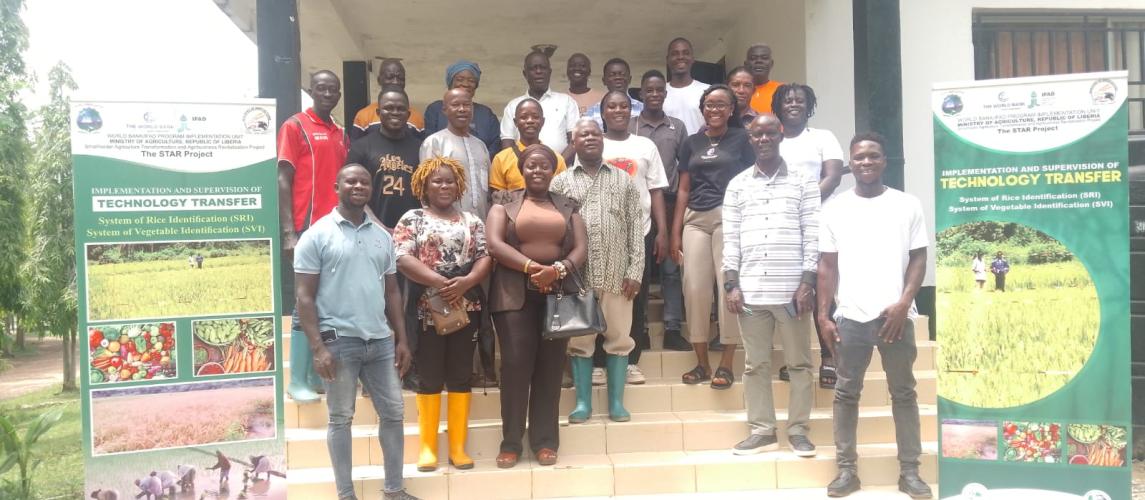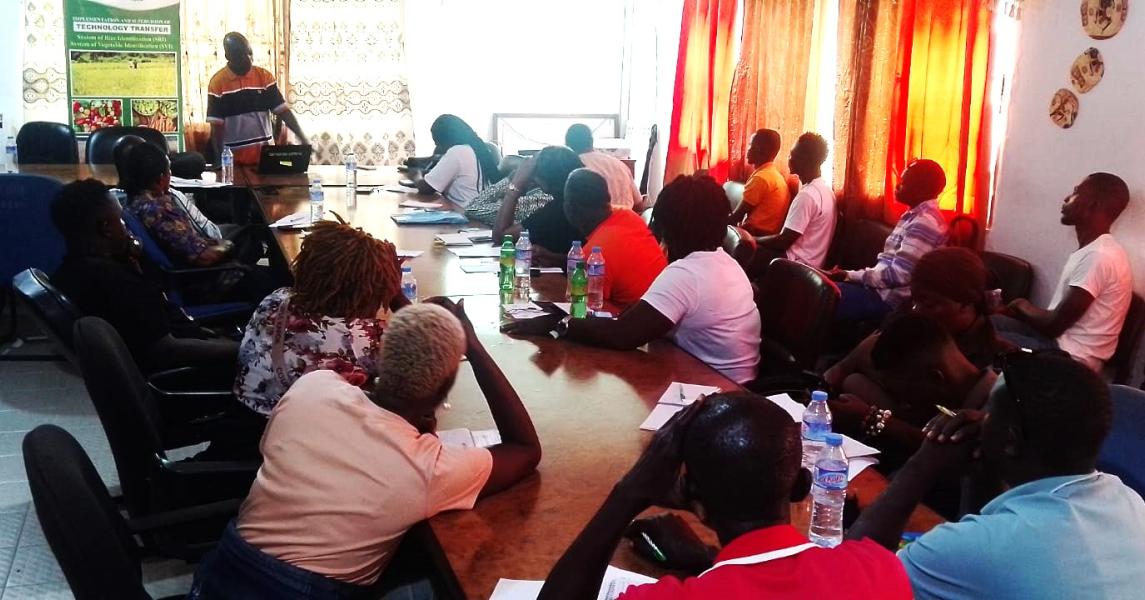
STAR-P/CARI Empowers Smallholder Farmers with Climate-Smart Agricultural Practices
The Smallholder Agriculture Transformation and Agribusiness Revitalization Project (STAR-P), facilitated by the Seed Development Certification Agency (SDCA) and the Central Agricultural Research Institute (CARI), convened a five-day training from July 3–8, 2025. The workshop engaged smallholder farmers, extension officers, youth and women farmer groups, and community-based organizations.
Held at CARI in Suakoko, the training focused on climate-smart agricultural practices and demonstration plots under two themes:
- System of Rice Intensification (SRI): Enhancing productivity using two upland rice varieties.
- System of Vegetable Intensification (SVI): Introducing local and exotic vegetable varieties with climate-resilient techniques.
STAR-P, implemented by CARI in collaboration with the Ministry of Agriculture and supported by the World Bank and IFAD, aims to enhance productivity and commercialization across Liberia’s rice, oil palm, and horticulture value chains. The project targets 38,000 smallholder farmers—at least 30% of them women—across all 15 counties.
CARI’s contribution includes field trials, technical support, and knowledge transfer through demonstration plots and capacity building. Declaring the workshop open, Dr. Arthur Bob Karnuah, CARI’s Director General, encouraged participants to deepen their understanding of SRI and SVI methods for local replication.
As Liberia’s premier agricultural research institution, CARI contributes to STAR-P through field trials and demonstration plots for rice and vegetable intensification, training and capacity building for farmers and extension agents, monitoring and evaluation of agronomic practices and outcomes, as well as, providing technical support for land preparation, planting, and post-harvest activities.
The project targets 38,000 smallholder farmers, with at least 30% being women, and extends across all 15 counties of Liberia. CARI serves as a hub for innovation and outreach, ensuring that research findings are effectively transferred to the field.
In an opening remark to declare the workshop officially open, Dr. Arthur Bob Karnuah, Director General of CARI, welcomed the participants and admonished them to remain focus and explore the opportunity to have further insight and understanding of the Systems of Rice and Vegetable Intensifications to be able to share the knowledge gained when they go back to their various locales.
Mr. Jobson Momo, Director General of SDCA, provided an in-depth overview of SRI and SVI, emphasizing their role in improving crop productivity, soil health, and water efficiency. His presentation aligned SRI techniques with climate-smart principles, including soil carbon enhancement, reduced methane emissions, and adaptive water use strategies.
Mr. Momo and other facilitators, including Mercy Lah, Eric Tokpah, Emma Jao, and Francis Ndormahun of CARI, also introduced broader climate-smart agriculture (CSA) approaches. These included crop diversification, agroforestry, conservation agriculture, efficient irrigation, and resilient crop varieties.
Jobson Momo began by grounding his audience in the fundamental purpose of an agricultural nursery, an intentionally managed space where seedlings and young saplings receive the tender care they need before facing the rigors of open‐field conditions. He explained that nurseries are the cradle of crop production, providing a controlled setting in which temperature, humidity, light, and water can all be calibrated to coax robust young plants into life.
He then walked through the core functions that make nurseries indispensable, adding, nurseries serve as propagation hubs for seeds, cuttings, and other vegetative materials.
This environment, according to him, also shields tender shoots from environmental shocks, extreme temperatures, heavy rains, pest invasions, and diseases, while ensuring varietal purity through careful labeling and physical separation of different strains.
Jobson then guided listeners through five common nursery models, each adapted to distinct resource and climatic realities. In low‐lying, water‐abundant areas, wet‐bed nurseries mimic paddy conditions by flooding leveled beds a few centimeters deep, a natural weed suppressor that simplifies maintenance. Where water must be conserved, dry‐bed nurseries use raised ridges to keep seedlings moist but not submerged, with irrigation applied only as needed.
Throughout, Jobson emphasized that the nursery’s ultimate goal is to deliver uniformly healthy, acclimated plants to the field, plants capable of withstanding climatic stresses, competing effectively with weeds, and translating initial vigor into robust yields. By tailoring nursery design and management to local conditions, be it water availability, land topography, or scale of operation, farmers and researchers can lay the groundwork for successful crop establishment and, ultimately, greater food security.
In addition, Mr. Ndormahun addressed the importance of seed quality and certification in improving rice production, noting the challenges in viability and post-harvest handling. Participants explored nursery models tailored to local conditions and resource availability, reinforcing the foundation for successful crop establishment and increased food security.

